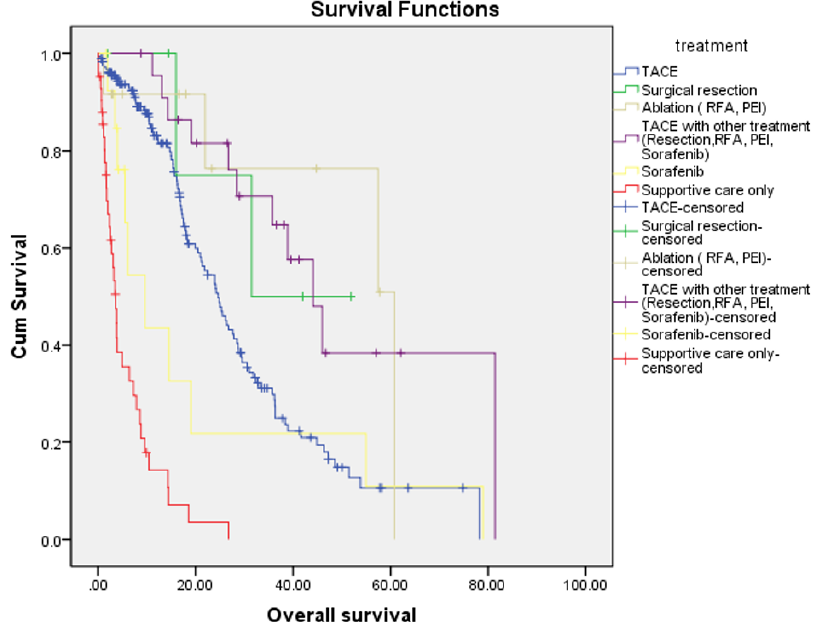Clinical features and survival of patients with hepatocellular carcinoma at a cancer treatment facility
DOI:
https://doi.org/10.15419/bmrat.v6i11.577Keywords:
Hepatocellular carcinoma, Pakistan, survivalAbstract
Background: Hepatocellular carcinoma (HCC) is the third leading cause of cancer-related deaths. This study aimed to determine the survival of patients with HCC at our treatment facility.
Methods: We retrospectively studied 278 patients with HCC who were seen between 2007 and 2013. Of these patients, 84.4% had evidence of prior infection with hepatitis C, while 7.8% had markers of hepatitis B infection.
Results: Median survival was 24.6 months for transarterial chemoembolization (TACE), 61 months for ablative therapies, and 31.5 months for those undergoing surgical resection. Increasing tumor size, multifocality, advanced Barcelona clinic liver cancer (BCLC) stage, and poor liver function (Child-Pugh class B-C) were significantly associated with worse prognosis; pvalues were 0.002, 0.009, <0.001, and <0.001, respectively.
Conclusion: Most patients in our series presented with advanced liver disease, with multifocal tumors and were candidates for palliative treatment only. Public education to minimize hepatitis B and C transmission, screening programs to detect disease at an earlier stage, and the development of specialist liver units and liver transplant programs can bring a change in HCC survival in developing countries.

Downloads
Published
Issue
Section
License
Copyright The Author(s) 2017. This article is published with open access by BioMedPress. This article is distributed under the terms of the Creative Commons Attribution License (CC-BY 4.0) which permits any use, distribution, and reproduction in any medium, provided the original author(s) and the source are credited.
